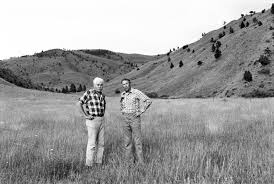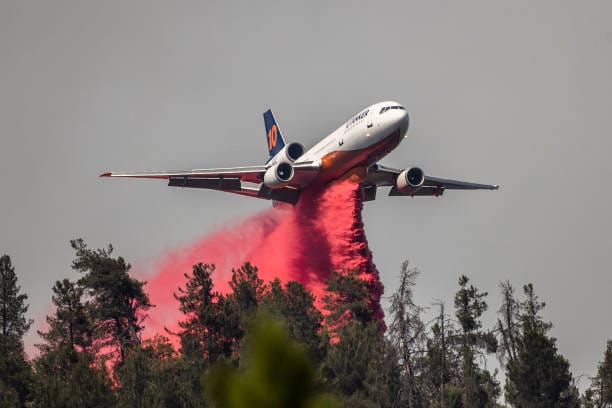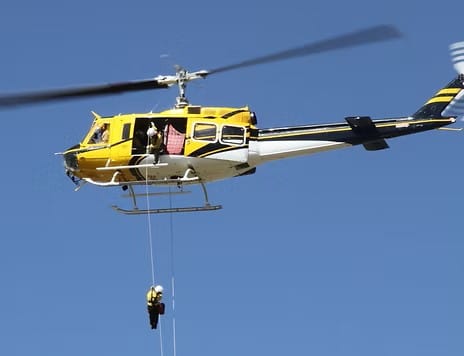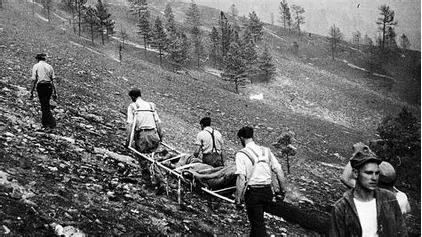On Snowy Nights
This year, On Snowy Nights also marks a moment worth noting. Jim recently received his third, First Place Award of

Our mission is public education as it relates to all things forestry - so your contributions matter. Your support means we can continue to bring you the quality of content you have come to expect from Evergreen.
If you appreciate our work, let us know
by subscribing or donating or leave us a tip!
Much gratitude to those of you who already support our work.
About a million years ago – when Joe Biden was still President – an old Forest Service retiree I know well – often joked with me about what we’d do if one of us was Chief of the Forest Service.

“You’d make I pretty good Chief,” he told me one morning.
“That’s crazy,” I replied. “Why would you even think it?”
Actually, I thought he’d make a great Chief but I knew he wanted nothing to do with his old outfit. He hardly recognized what it became during the Obama-Biden years. He was over the top angry. And so our running gag ran faster.
“Tell you what,” I said one morning. “If it’s offered, I’ll take the Chief’s job if you’ll be my enforcer.”
“Done,” he said. “What’s first on our list?”
“We’re going to move all Forest Service decision-making down to the Supervisor and District Ranger levels. We’ll clean out the Washington office, leaving a few accountants and lobbyists, but everyone else will accept a field transfer or retire.”
“Wow!,” he said. “Where will our office be?”

“We are going to lease a used Falcon 2000 jet and get a bag full of cell phones from Verizon,” I answered.
“A jet!" he exclaimed. "What for?”
“It’s our office,” I explained. "We can buy a reliable used 2000 for about $5 million. That's far less than the Forest Service is spending daily on wildfires at the height of fire season. It has a galley up front, a potty in the rear and ample seating and work space."
"What's our plan," he asked.“We’ll travel three weeks out of every four, making unannounced visits to District Ranger and Supervisor offices, I replied. "We want to make sure every employee has all the regulatory and administrative tools they need to be successful in their on-the-ground forestry work.
“We also want to make sure they understand that put out the damned fire means put out the damned fire. It’s all about fuels management, salvaging standing dead timber, thinning, prescribed burning and replanting.
"Those working in SO’s and DR’s that are doing good work will be rewarded with more money to get more work done and those that aren’t doing well will have to explain to us why they are falling behind or failing.”
My friend fell silent for a minute or so. Then this:
“As absurd as it sounds, that’s not a bad idea.”
The more I thought about it, the more I realized that Tom Schultz’s “to do” list will require tons of travel – and a lot of explaining to House and Senate members who abdicated their congressional responsibilities to anti-forestry groups that care only about power and money. Hence, the forest health/wildfire mess we face today.
Currently, Chief Schultz is trying to figure out how to keep or rehire the people he needs to reconstruct the Forest Service that knew how to manage forests – the 13,736 people who retired or were dismissed between 1992 and 2018.
Most were engineers, foresters, technicians, biologists and botanists. Some were respected in scientific circles all over the world. But they are gone now, caught up in the political bedlam that followed the 1990 spotted owl listing, most notably litigation and the screwball idea that “managed fire for ecosystem benefit” was an acceptable replacement for science-based forestry.
If I were Forest Service Chief, I'd fill some of the gaps in bedlam with retirees who can help Forest Supervisors and District Rangers teach their crews how to navigate the regulatory maze Congress and several Administrations have created.
I’d also do something immediate about the wildfire fighting industry that developed as a response to the wildfire crisis that rose from the ashes of the spotted owl listing and congressional inaction and overreach.

We’re going to need our firefighting industry for years to come, but we have many of the wrong aviation assets. In the world of converted DC-10s and 747’s there is no such thing as “rapid response.” These are large, lumbering beasts that require long runways and large ground support crews that are often based hours away from most wildfires.
By contrast, amphibious SEATS [single-engine air tankers] can land and take off from small lakes or rivers or fields or dirt roads. Our friends at Dauntless Air fly them and we will have four on standby at our nearby Hayden Airport again this summer. The Idaho Department of Lands hires them.

This isn’t a commercial for Dauntless. Others fly them too, but we know Dauntless CEO Brett L’Esperance and we have his maps showing hundreds of places where amphibious SEATS can scoop up water in northern Idaho, western Montana, Wyoming and Utah. Asphalt, turf and dirt runway lengths vary from 13,500 at Mountain Home Air Force Base in Idaho to 2,000 feet of turf at the Freedom Air Ranch near Freedom, Wyoming. Our local airport - Pappy Boyington Field - is 5,400 feet of asphalt. Yeah, that Pappy. He was born here.
But SEATS aren’t the only tools we need for rapid wildfire response. We need helicopters and helitack crews that work from prepositioned portable water tanks with long hoses and water pumps. And we need smoke jumpers.

Currently, the Forest Service and BLM employ 415 smoke jumpers on nine jump bases in the West. But Chuck Sheley, Smokejumper magazine editor, reports that at the height of fire season, there are at least 100 jumpers sitting around waiting for the phone to ring. “It’s a terrible waste,” he says.

I agree but the Forest Service says it’s a safety issue. I have no doubt. But smoke jumpers are highly trained. They live to jump – and they aren’t overrun by raging wildfires as often as ground crews.

Congress needs to stop whistling past this graveyard. It needs to fund the tools the Forest Service and BLM need to reduce the risks posed by insect and disease infestations and inevitable wildfire.
A good place for House and Senate members to gain a better understanding of what has happened since 1992 is to re-read the Workforce Capacity study done by the National Association of Forest Service Retirees in 2019 for Ag Secretary Sonny Perdue. He should have beat Congress over the head with his copy. But didn’t.
Me? I am jetting across the Midwest at 530 miles per hour on a bright sunny morning. My enforcer friend is on one of our cell phones explaining life to one of his charges. We’ll touch down unannounced in Missoula, Montana in about 90 minutes. There are 12 National Forests within easy driving distance.
Yup. The best response is a rapid response.
You 100% tax-deductible subscription allows us to continue providing science-based forestry information with the goal of ensuring healthy forests forever.